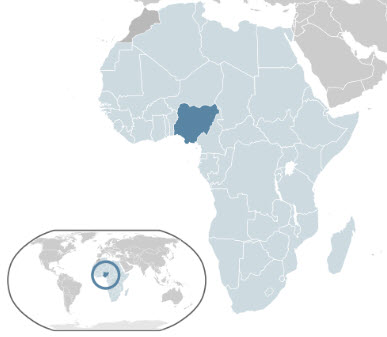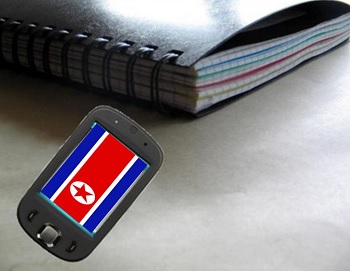Demand continues to rise for wearables and it appears to be reaching every corner of the world.
The wearable technology fad has not only been making its way through developed markets, but it is also spreading through developing nations, as well, such as in the largest economy of Africa, Nigeria.
Phone manufacturers in that company are currently pushing a range of different wearables to boost their revenues.
These companies are focusing on their promotions of items that range from smartwatches to smart glasses as well as fitness bands and other electronic accessories. The hope is to increase revenues as well as to take hold of a larger market share. Followers of the market feel that demand is rising as smartphone penetration reaches an uppermost point and as the integration of wearable technology gadgets with those mobile devices boosts their functionality.
The enhanced experience has allowed the demand for wearable technology to experience a considerable growth.
 Figures from Technology Distributors (TD) show that more than 10 million smart devices that come to a value of more than $1 billion were sold in Nigeria last year, alone. That said, market followers have feel that the upcoming wave of devices to be sold within the mobile industry is likely to be within the wearables category.
Figures from Technology Distributors (TD) show that more than 10 million smart devices that come to a value of more than $1 billion were sold in Nigeria last year, alone. That said, market followers have feel that the upcoming wave of devices to be sold within the mobile industry is likely to be within the wearables category.
Research firm Deliotte forecasted that fitness bands, smartwatches, and smart glasses would break the $3 billion mark this year, after having sold approximately 10 million units. Some of the giants within this industry, such as Samsung, Google, Sony, Huawei, and Nokia – the top sellers in Nigeria – have already started to reap the benefits of this considerable potential in revenue. Many of these companies have been sending an increasing number of wearable tech devices into Nigeria.
However, they are not alone. Smaller boutique manufacturers have also been hoping to carve out their own little slices of the pie as they step into this space and aim to obtain a healthy portion of the market share, bringing in greater revenues.
The wearable technology category of mobile as a whole has the potential to bring about considerable changes to the global tech industry. It will be an important sector to watch in terms of trends and direction over coming months and years.
Socially acceptable ways of using smartphones have been the focus of many studies and discussions lately.
Due to the exceptionally rapid adoption of mobile technology, there hasn’t been much of an opportunity for a standard of polite use to have naturally developed in the majority of countries, but in Korea – as with many other social issues – the government has taken it upon itself to create its own set of rules with regards to smartphone etiquette.
Etiquette while using these devices – which function in nearly every public place – is typically considered an important issue.
In North Korea, there are nearly 2.5 million people (representing about 10 percent of the total population of the country) that subscribe to the wireless services of the country’s carrier, Koryolink, which was first established in 2008. This number has stayed quite low when compared to the majority of the rest of the world as a result of the prohibitively expensive prices of mobile technology devices in the country. A BBC News story that ran last year reported that the average annual salary in the country is under $1,000, and handsets are being sold for a few hundred dollars at Koryolink.
Still, mobile technology is seen by the government as a growing trend, and they have decided to step into its use.
 A cultural magazine from North Korea was obtained by a news agency in South Korea, called Yonhap, which reported that the government sees smartphones as a rising trend and has now issued a range of etiquette lessons with regards to answering and placing calls on these devices while in public. All of North Korea’s official media is controlled by its government’s regime.
A cultural magazine from North Korea was obtained by a news agency in South Korea, called Yonhap, which reported that the government sees smartphones as a rising trend and has now issued a range of etiquette lessons with regards to answering and placing calls on these devices while in public. All of North Korea’s official media is controlled by its government’s regime.
The translation provided by Yonhap stated that the etiquette lesson for mobile technology device use in public instructed that “Speaking loudly or arguing over the phone in public places where many people are gathered is thoughtless and impolite behavior.” It underscored the point that the increase in use of smartphones in today’s society has brought about a trend in which proper phone etiquette is being neglected by some people.
The article went on to provide a number of other instructions, including to highlight the importance of polite and appropriate greetings when using mobile technology, which they say is different from the use of landlines. For example, it stated that the device user may or may not have a caller ID function and, therefore, “one must not neglect to introduce oneself or offer greetings.”
 Figures from Technology Distributors (TD) show that more than 10 million smart devices that come to a value of more than $1 billion were sold in Nigeria last year, alone. That said, market followers have feel that the upcoming wave of devices to be sold within the mobile industry is likely to be within the wearables category.
Figures from Technology Distributors (TD) show that more than 10 million smart devices that come to a value of more than $1 billion were sold in Nigeria last year, alone. That said, market followers have feel that the upcoming wave of devices to be sold within the mobile industry is likely to be within the wearables category.
 A cultural magazine from North Korea was obtained by a news agency in South Korea, called Yonhap, which reported that the government sees smartphones as a rising trend and has now issued a range of etiquette lessons with regards to answering and placing calls on these devices while in public. All of North Korea’s official media is controlled by its government’s regime.
A cultural magazine from North Korea was obtained by a news agency in South Korea, called Yonhap, which reported that the government sees smartphones as a rising trend and has now issued a range of etiquette lessons with regards to answering and placing calls on these devices while in public. All of North Korea’s official media is controlled by its government’s regime.